BY KRIS FANT
If you ask for off road riding advice, you will get many opinions. Most people agree that standing while riding off road is a useful skill.
The reasons for this include separating your weight from the weight of the bike, which allows you to use your body weight to steer or counter weight the bike. It also avoids the butt-steer, whiskey-throttle combo that can be so treacherous while sitting on the bike. A lot of people find it challenging to stand, and one of the reasons is bike set up. The following is a list of things you can do to your bike to make it ergonomically easier to stand.
Foot pegs
The first upgrade I make to my bikes is bigger, ‘grippier’ foot pegs, though the stock DR650 pegs have been good. It is very helpful to have a solid platform to stand on, and the sharper and wider the foot peg, the more confident I feel.
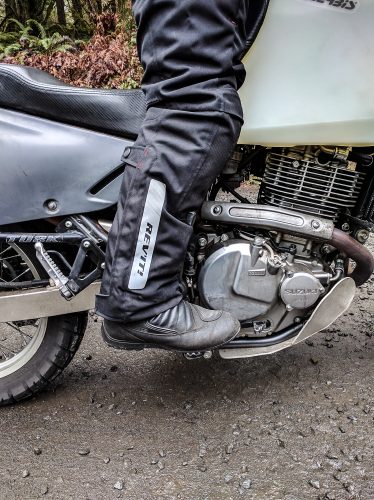
Handlebar Height
People who try standing for the first time often leaning over to reach their handlebars. Ideally, you want to be able to stand on your bike with your knees slightly bent, arms relaxed, and eyes forward. In order to get your handlebars to the correct height (usually taller than stock), there are two options. You can get handlebars that are taller than stock, or you can add handlebar risers.
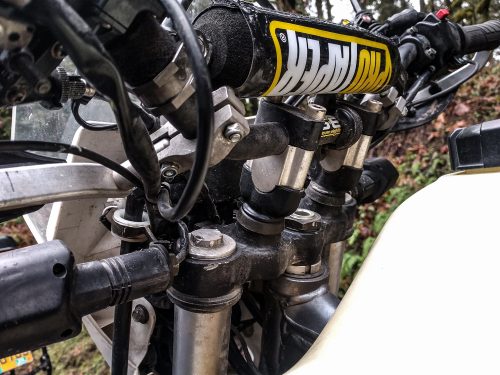
Handlebar Width
In my experience, the ideal width of a handlebar is the width you’d place your hands to do a push-up, or about shoulder width. For me, this means finding handlebars that are narrower, and for my husband, handlebars that are wider.
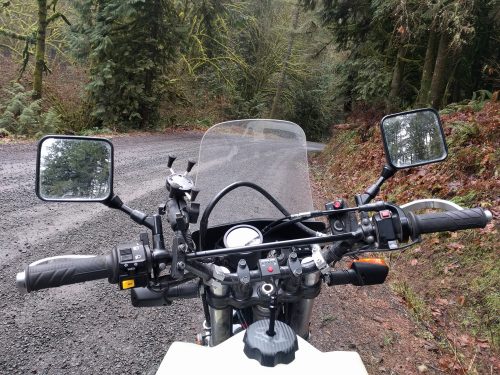
Handlebar Position
For most off-road riding, the more weight over your front tire, the more traction. One Make sure that in your standing position, you are leaned slightly forward. You can rotate your handlebars forward slightly to bring your body weight forward. On my dirt bike, I have rotated my handlebars forward an extreme amount to help remind me to keep my weight over my front tire. To know if you are in the ideal position on a dirt bike, you should see the front of your number plate. On my dual sport, I have the handlebars in a more neutral position because I am riding both street and off-road.
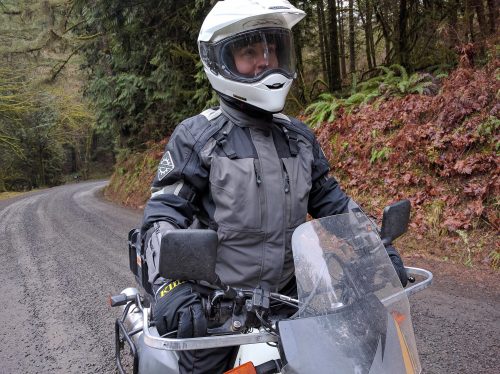
Controls
When you stand up, your wrist becomes straighter, changing the angle of your reach on the controls. If you rotate the brake and clutch slightly forward, you will be able to use them while standing without an uncomfortable bend in your wrists.
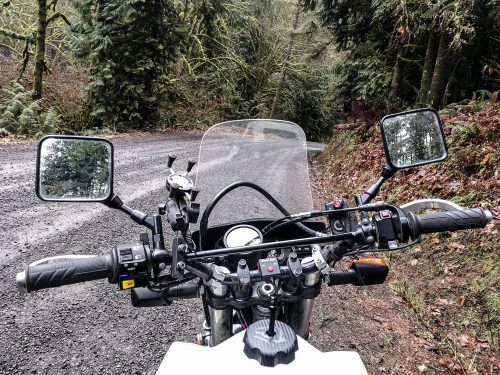
Foot peg lowering
If you do all of the above adjustments for height and still find that you are crouching over your bike to reach the controls, many bikes have footpeg lowering options that will change your body position relative to the handlebars, and also help with knee and leg fatigue on long highway days.
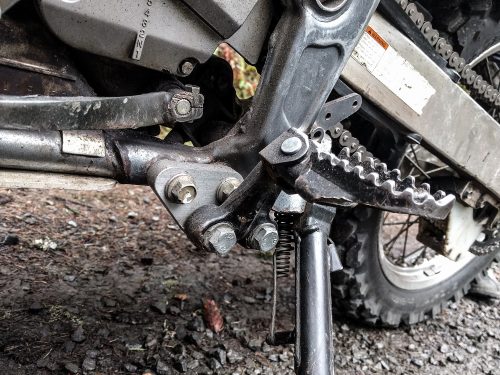
Two Riding Positions
There are two basic standing positions:the relaxed position and the attack position. The relaxed position is the way you set up your bike to to ride for hours. Knees slightly bent to absorb any unevenness in the terrain, arms relaxed, grips gently in your hands. Attack position is getting ready for the tough stuff—knees more bent, bend in the elbows, hands ready on the handlebars to make corrections.
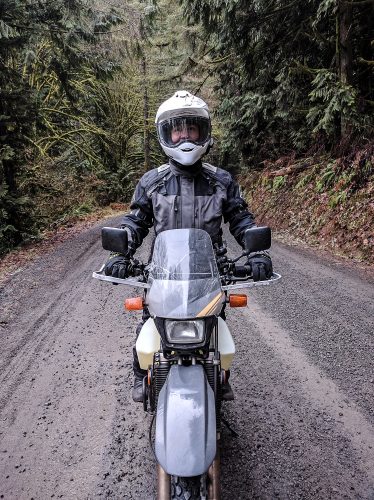
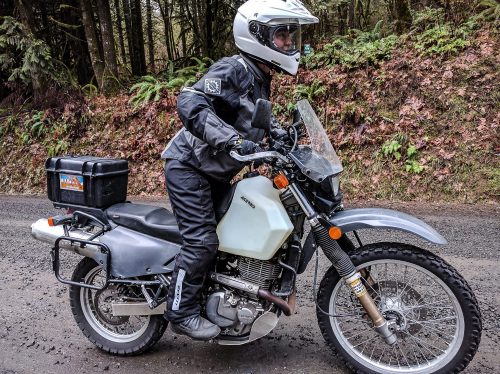
Practice
Once your bike is set up, find an easy place to practice. An open field is ideal for trying out new skills. While traveling at a speed fast enough to balance, practice standing. Once you know you can do it, practice often, whether it be on a familiar road on your way home, or on an easy gravel road. Practice on easy terrain until it is second nature. On obstacles, if standing doesn’t come right way, practice getting your weight off the seat and on your footpegs. In a wide open area, practice putting all of your weight on one peg, then the other. Lay out some cones or rocks to weave around, seeing if you can weave just using the weight of your feet. Play with your motorcycle to see what it can do and how it responds to your inputs.
Hopefully this helps you get set up to stand up!
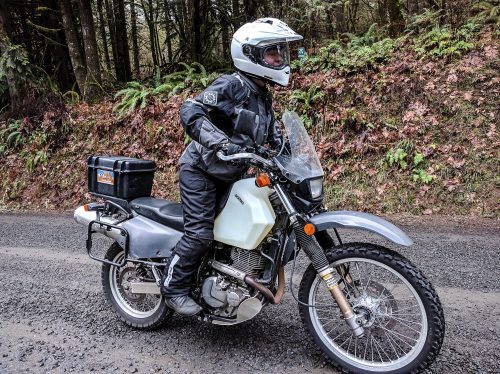

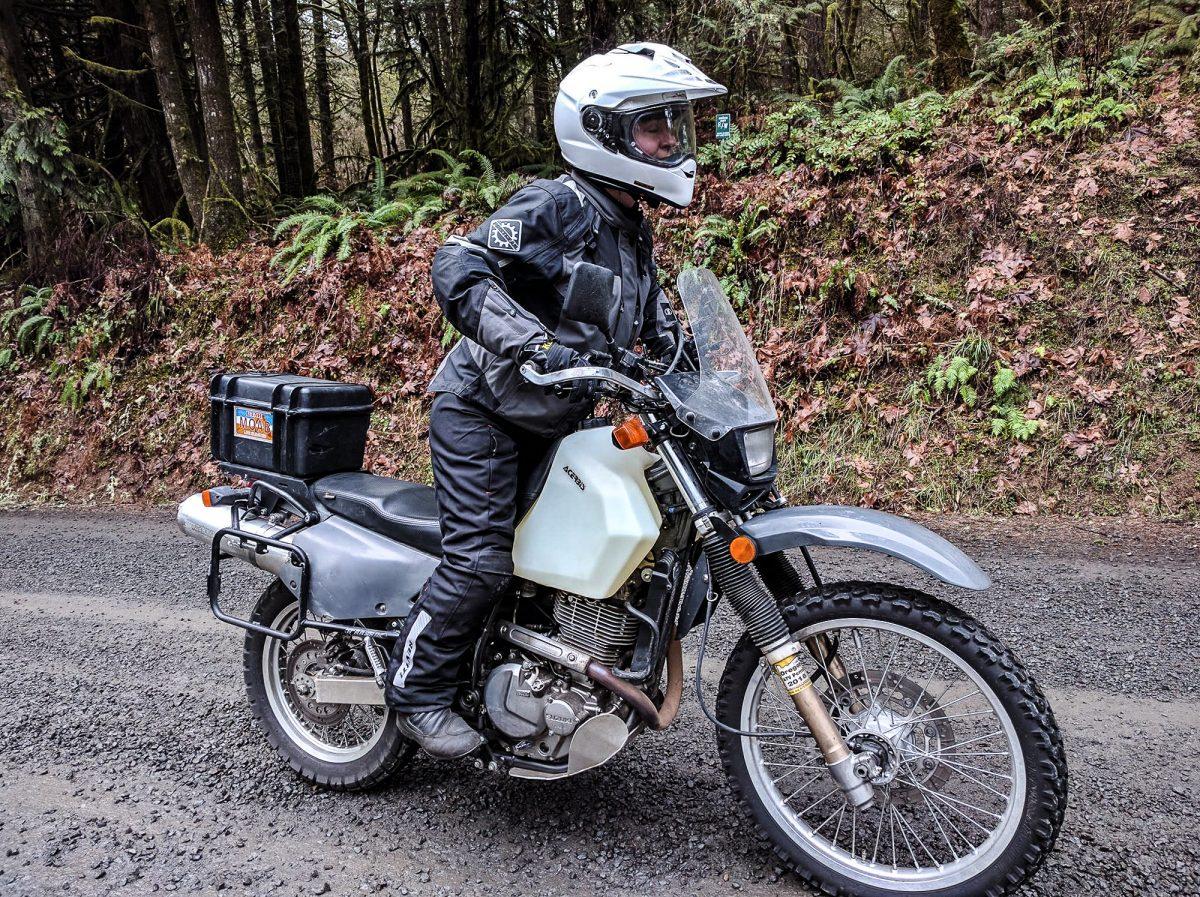
1 comment
Kris, thanks for the helpful directions.
When I adjusted my bike for standing up, I noticed a few things that needed to be adjusted afterward:
Adjustments for wider pegs:
Mounting wider pegs will change the distance to the break/gear levers.
I had to move the gear lever forward in order to switch gear without twisting my foot.
Adjustments for riding standing UP:
Standing up changes the geometry of the body. Break/gear levers might have to be adjusted in height.
On my first try I had to lift my foot in order to reach the break – not really ideal in any case,
but especially not while figuring out how to ride standing up.
The final setting was a bit of a compromise but did work well for sitting and standing up.
Pegs
Aluminium pegs look good from the specs and are light weight.
But they will break instead of bend.
This happened to my partner 2 minutes after leaving the ferry to Morocco and right after he ‘found’ the oily patch on the road.
A quite large piece broke off and the peg was then much smaller than a normal one.
Mine broke 2 weeks later – I did not even notice it until the sharp edge ripped my protective pants and poked my naked leg – outch!